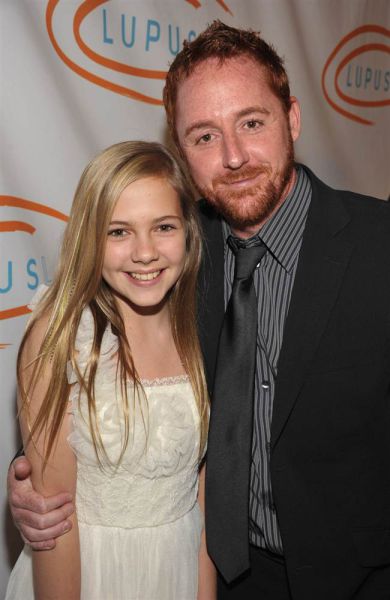The world’s safest house, according to architect Eugene Tsui and current Internet buzz, is a Berkeley, Calif., home that was inspired by an alien-looking, sturdy animal called a tardigrade.
Locals familiar with the home, on 2747 Matthews Street, have nicknamed it The Fish House because of its scaly exterior, fish eye-resembling windows and side fins.
Tardigrades aren’t fish, though. They are small, water-dwelling, segmented animals with eight legs. (Be sure to click on the earlier tardigrade link. They are quite something to look at!) Tsui is clearly a fan.
On his website, he writes:
This structure is based upon the world’s most indestructable living creature — the Tardigrade, with its oval plan and parabolic top it utilizes the same structural principles nature employs in creating an astoundingly durable design. Internationally touted as the world’s safest house, it features an oval reinforced concrete foundation over a series of large perforated drain pipes that immediately dispel any water built up and heaving from the soil or sudden flood conditions. Water is immediately taken out through a large storm drain. The house is partially buried in the soil about 1.5 meters and the walls are made of recycled styrofoam and cement block called “Rastrablock.” It is impervious to water, fire, termites, has a 40+ R-Value rating and reduces sound by 50 decibels. It is also 10 percent less expensive then conventional framing construction and much less labor intensive since the blocks are simply glued together, rebar placed inside and concrete poured in. The upper structure is a series of parabolic arches connected by stressed wood sheathing and sprayed with reinforced concrete tied into the recycled block system creating a continuous, unified shell. A series of black flex tubing is placed on the roof to act as passive solar warm air vents. The house has proven itself to be cool in the hot summer months and warm in the cold winter months, all without mechanical air conditioning and heating machinery. A 5 meter diameter south-facing window acts as a light and heat (winter) magnifier to provide light to the central 10 meter high rotunda living area. From this open rotunda light and heat is distributed to the rooms of the house at two levels. Inside, the house contains three ever-deepening levels at the ground floor. The house grows more spacious the deeper one walks into it. The core living area features a suspended spiral ramp with steel cables radiating from the roof skylight. The 220+ square meter house contains a living/conversation area, a recreation room, music/study room, laundry, kitchen and antique display area, three bathrooms, three bedrooms, continuous hallway cabinets, sunken outdoor patio and garden. All but three of the windows in the entire house are openable. All shelves and cabinets are built into the structure of the house and cannot be broken apart in an earthquake. All forms are curvilinear for safety and ease of passing. Every part of the house is interconnected structurally with every other part of the house. The structure disperses stresses and strains that act upon it unilaterally. Manually operated opening and closing “Nostril” windows let in fresh air without letting in insects. Its aerodynamic shape also prevents fire, carried by wind, from adhering to its surface, helping to prevent fire.
The unusual house was built for just $250,000, a relative drop in the construction bucket. Tsui says it’s made out of concrete, styrofoam/cement block, “hardwall” structural plaster, stucco, non-toxic waterproofing, acrylic, marine fiberglass, douglas fir, recycled wood, birch veneer plywood, “opalina” iridescent paint and rich gold exterior paint.
The design is a “precise ellipse in plan.”
In addition to studying tardigrades, Tsui also analyzed the inner workings of Cholla cactus. The recycled Styrofoam and cement blocks used in the structure (reinforced with steel and concrete) are said to be “lightweight, fireproof, waterproof, termite-proof and extremely earthquake resistant.” The reinforced lattice structure of the blocks is what is “very much like the skeleton of a the Cholla cactus.”
He even worked in a bit of dinosaur body design.
As Tsui explained, “The design program approached the house as a living organism capable of actively responding to various natural elements of the site. A prominent example of this is the subsurface solar water tubes that are positioned to correspond to the sun-ray like exterior motif that covers much of the upper level of the house. Water in the black tubes is heated by the sun throughout the day. At night the stored heat is radiated back into the interior of the house walls and provides radiant wall heat. This subsurface solar heating system was conceived by studying the bone and capillary structures of two dinosaurs, the Dimetrodon and the Stegosaurus.”
He added, “Both reptiles utilized a form of biological solar heating by way of the large sail-like structure on the back of the Dimetrodon and the series of plate structures on the back of the Stegosaurus. In both these ancient reptiles the plate structures were surrounded by a very packed configuration of blood veins. The sun heated up these vein-filled plates and helped to regulate the body temperature of these reptiles. Thus a form of living solar heating was being practiced 150,000,000 years ago.”
To see more images of this animal- and nature-inspired house, including its very cool central skylight and circular ramp, please check out this site.

































































